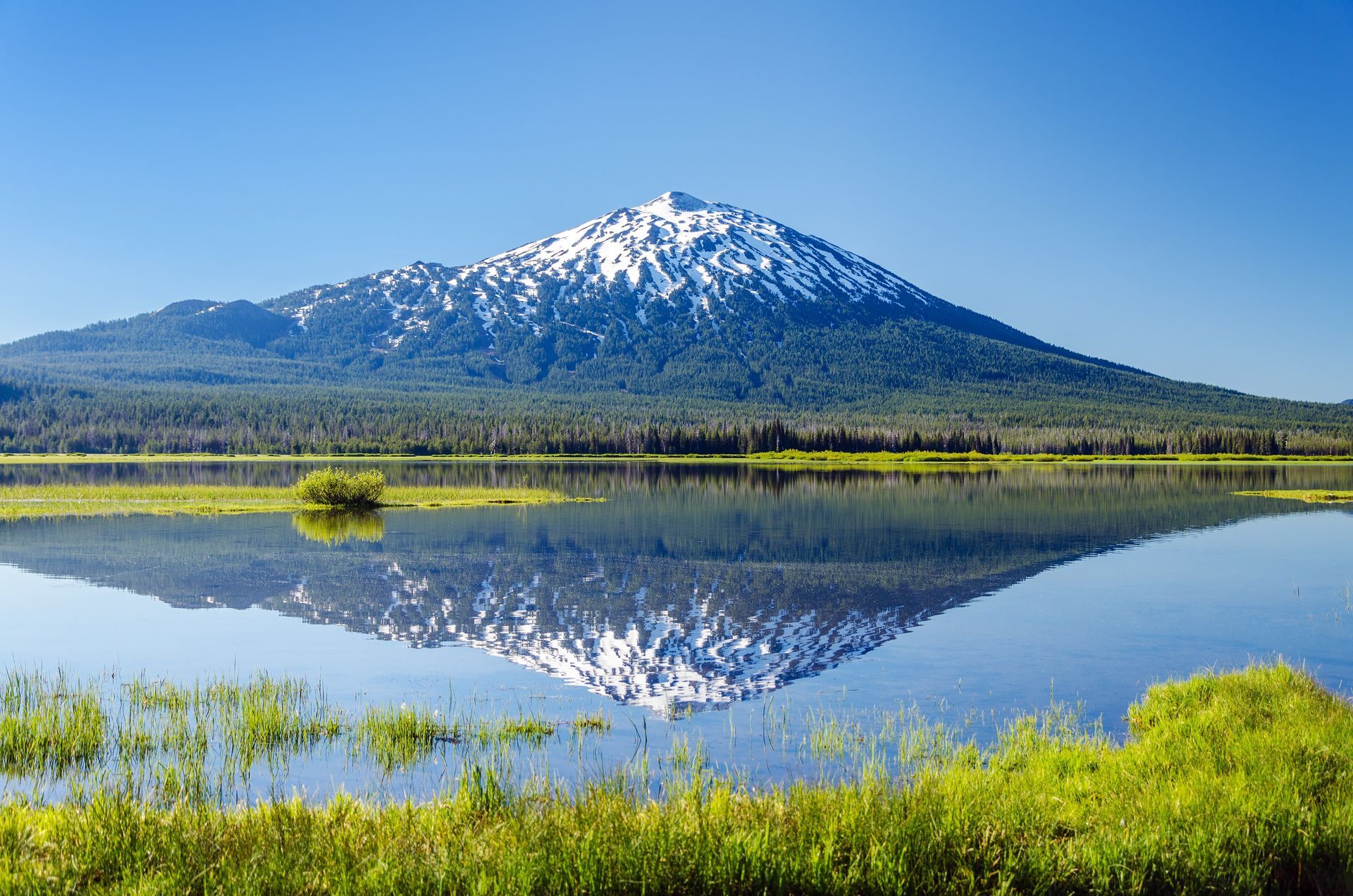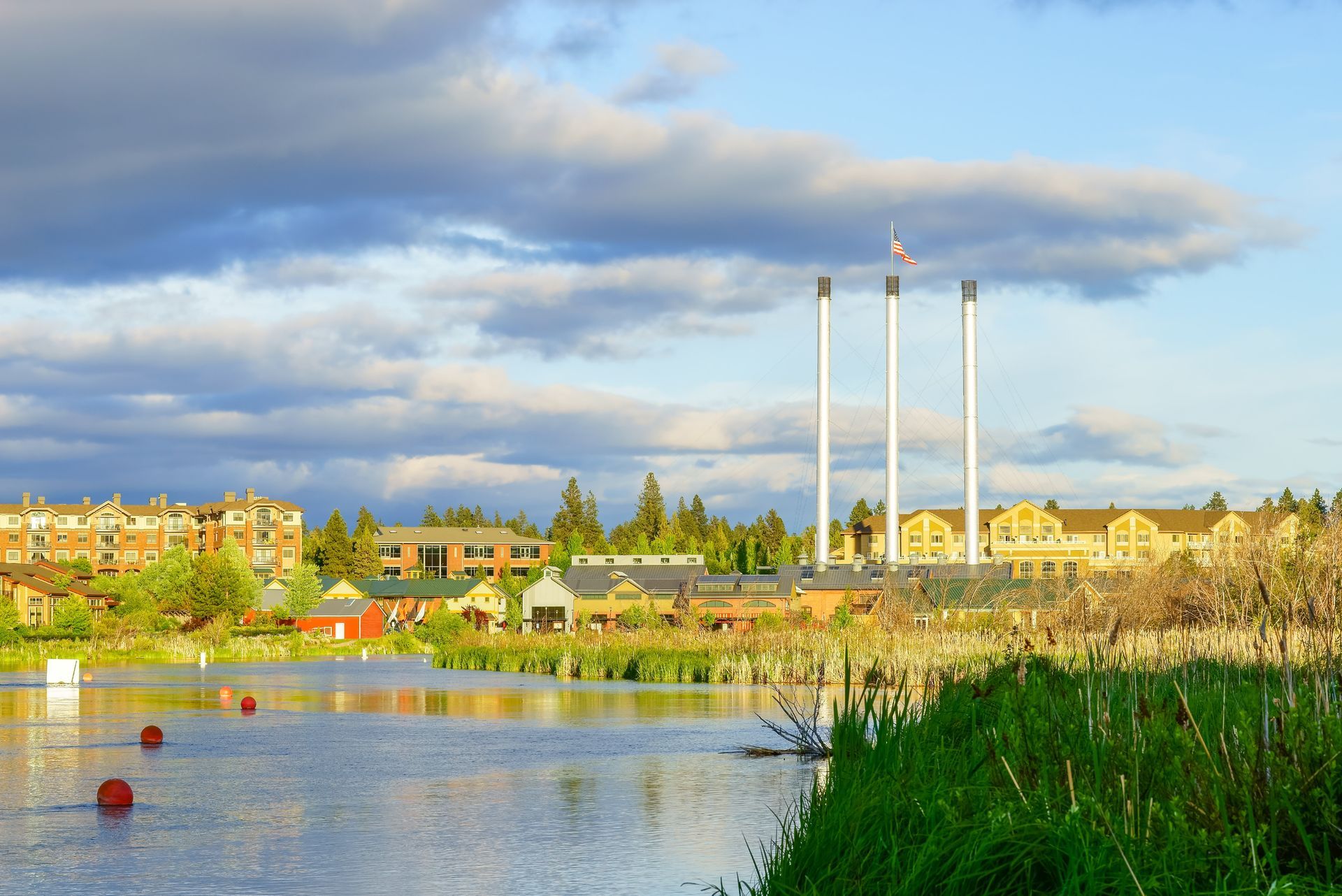Oregon’s Diverse Business: A Comprehensive Overview
Oregon’s Key Industries

Oregon is known for its stunning natural beauty, progressive values, and a diverse and vibrant business landscape. From the metropolitan hub or Portland, to the expansive suburbs and scenic small towns scattered across the state, Oregon's business ecosystem is characterized by innovation, sustainability, and a strong sense of community. The following article examines Oregon’s diverse business landscape, key industries, notable entrepreneurs, Oregon-based companies, and the primary factors contributing to the state's economic outlook.
Oregon’s Key Industries
Oregon's primary economy was primarily supported by natural resources until the mid 1980s, including forestry, timber production, agriculture, and fishing. Since that time, a combination of emerging and traditional industries, including professional, scientific, technology, manufacturing, and tourism are a vital part of the economy. Today, each of these industries plays a crucial role in shaping Oregon’s thriving economic profile.

Tourism & Outdoor Recreation
Due to Oregon's natural beauty and diverse landscapes, its vast recreational opportunities attract millions of tourists each year, making tourism a vital industry for the state. In fact, in 2022, Oregon’s tourism industry reached over $13.9 billion dollars in visitor spending (Travel Oregon Report, 2022). From its majestic and rugged coastline to the lush forests, vast high deserts and mountain ranges, Oregon’s landscapes provide endless for outdoor recreation, including hiking, rafting, skiing, fishing, and camping.
Oregon's tourism industry also benefits from a rich cultural heritage, with numerous festivals, museums, and historic sites. Between 2021 - 2022, 46% of all tourists spent time in Portland; 37% traveled to the Oregon Coast and 35% the Willamette Valley (Travel Oregon Report, 2022). Portland and Ashland are popular tourist destinations, offering a mix of urban amenities and access to natural attractions. Central Oregon is also known for tourism with nearby Sunriver resort and Mt Bachelor attracting travelers year-round.
Technology
Oregon’s technology sector is often referred to as the "Silicon Forest," and considered a major driver of economic growth. The Portland metro area is also home to several tech companies, ranging from startups to long-time industry players, such as Intel.
Oregon’s technology sector is often referred to as the "Silicon Forest," and considered a major driver of economic growth. The Portland metro area is also home to several tech companies, ranging from startups to long-time industry players, such as Intel.
Oregon's tech ecosystem benefits from a skilled, diverse workforce, a collaborative business environment, and proximity to major West Coast tech hubs, such as the Silicon Valley and Seattle. As a regular host of tech-focused events and conferences, the state continues to foster networking and knowledge investment among industry professionals.
Wood Products & Forestry
Oregon's lush and vast forests contribute significantly to the economy by supporting a robust forestry and wood products industry. With centuries of millwork and timber production, the state is one of the largest producers of softwood lumber in the United States. Additionally, timber, plywood, and paper products are key exports, also contributing to domestic and international markets.
Moreover, the forestry sector in Oregon is committed to sustainable practices, balancing the economic interests of the state with environmental stewardship. Due to the value of sustainable practices many companies adhere to rigorous testing and standards for forest management and certification, ensuring longevity and productivity of Oregon's forests.
Food Production & Agriculture
Agriculture is a vital part of Oregon's economy, including the Willamette Valley’s farming community, which produces a diverse array of crops and livestock. In addition, Oregon is a leading producer of hazelnuts, wine grapes, pears, and berries. The Willamette Valley is often referred to as "Oregon's breadbasket," due to its fertile soil, which is particularly renowned for its high-quality agricultural end-use products.
The state's wine industry has also continued to gain international acclaim, with the Willamette Valley recognized as a premier wine-producer of Pinot Noir. Oregon wines have garnered numerous awards and accolades, attracting wine enthusiasts and tourists to visit wineries, and tasting rooms alike.
Manufacturing
Manufacturing is another staple of Oregon's diverse economy, with an array of products ranging from machinery and transportation equipment to semiconductors and electronics. Due to its strategic location, with access to major transportation routes and ports, the state is an ideal hub for manufacturing and distribution.
Intel’s Hillsboro, Oregon location makes microprocessors and brings in more than $1 billion in revenue. Overall, Intel ranks as the state’s largest industrial employer, employing 19,300 individuals.
In addition to semi-conductors, Oregon’s businesses span various industries, reflecting the diversity and innovation that characterize Oregon's business landscape.
Oregon is home to several prominent companies and notable entrepreneurs that have made significant contributions to the local and global economy.
Nike
Headquartered in Beaverton, Nike is synonymous with innovation and excellence in sports.
Founded in 1964 by University of Oregon track coach Bill Bowerman and his former student Phil Knight, Nike has become one of the world's leading athletic footwear and apparel brands. While Nike’s impact on Oregon's economy is substantial, providing thousands of jobs and supporting local suppliers and businesses, the company also promotes a strong commitment to sustainability and community engagement further enhances its global reputation due to responsible manufacturing practices.
Columbia Sportswear
Columbia Sportswear is another iconic Oregon-based company, which specializes in outdoor apparel and equipment. In 1970 Gert Boyle gave up her role as housewife to become an executive and run the family business after her husband passed away. Since that time, she led Columbia to become a global brand known for its high-quality products and designed for outdoor enthusiasts. Headquartered in Portland, Oregon, Columbia Sportswear plays a significant role in the local economy, invests in state universities, philanthropic causes, and supports numerous community initiatives. Columbia Sportswear’s success underscores Oregon's reputation as a hub for outdoor recreation and related industries.
Oregon's Economic Dynamism
Along with dynamic manufacturing companies, several other factors contribute to the economic vitality of Oregon, including a skilled workforce, inclusive business environment, and a commitment to sustainability and innovation.
Oregon's workforce is both skilled and highly educated, with a strong emphasis on STEM (science, technology, engineering, and mathematics) education. The state's universities and colleges, including Oregon State University, the University of Oregon, Eastern Oregon University and Portland State University, along with several private universities and community colleges that continue to provide a steady pipeline of talent for its key industries.
Programs and initiatives that promote workforce development and training throughout the state ensure that Oregon remains competitive in a rapidly growing and changing global economy. Partnerships between educational institutions and businesses also help to align higher education curricula with industry needs to prepare students for high-demand careers.
Supportive Business Climate
In addition to a highly educated and skilled workforce, Oregon's business environment is characterized by collaboration and innovation. The state offers several incentives and resources to support business growth and development of local entrepreneurs, including providing tax credits, grants, and access to capital.
Organizations like Business Oregon, the state's economic development agency, play a crucial role in fostering a supportive ecosystem for businesses. Business Oregon provides assistance with financing, export promotion, and market expansion, helping Oregon-based companies thrive and create jobs.
Sustainability & Innovation
In addition to investing in business development, Oregon is known for its commitment to sustainability and environmental stewardship. The state’s businesses have become leaders in green practices, from renewable energy and sustainable agriculture to eco-friendly manufacturing and waste reduction.
Oregon's focus on sustainability also provides a competitive advantage in a market that increasingly prioritizes environmental responsibility, as companies that embrace innovative solutions and sustainable practices are well-positioned to succeed in the evolving global economy.
Opportunities & Challenges
While Oregon's business landscape is dynamic and diverse, it also faces challenges that need to be addressed to ensure continued growth and prosperity.
Housing Affordability
One of the most pressing issues in Oregon, is housing affordability. Several cities within the state, including the Portland metropolitan area, suburban markets, and Central Oregon, have experienced rapid population growth. With a limited housing supply, the housing prices have been driven up, making it very challenging for local residents to find affordable housing.
To address this issue, many counties in Oregon implementing programs to include intentional increases of the housing supply, implementing specific regulatory policies to control costs, and providing supportive programs for lower-income residents, including ensuring affordable housing options are available to maintain a stable and productive workforce.
Transportation & Infrastructure
As Oregon's economy continues to grow, so does the demand for efficient infrastructure and transportation. Investments in transportation, including roads, bridges, and public transit, are crucial for supporting continued business growth, while addressing congestion.
Oregon has made significant strides in promoting alternative transportation options, such as biking and public transit, but continued investment and innovation are needed to meet the needs of a growing population and economy.
Economic Diversification
As Oregon's economy is diverse, the state does have room for further diversification to reduce dependence on any single industry. Factors that encourage growth, including supporting the emerging sectors, such as renewable energy, biotechnology, and creative industries, can help to provide additional stability and resilience.
In addition, supporting entrepreneurship and innovation by investing in small business incubators, accelerators, and enlisting venture capital can help nurture Oregon’s new businesses and industries, helping to drive economic growth and job creation.
Wrap Up
Overall, Oregon's business landscape is robust and offers a testament to the state's resilience, creativity, and commitment to sustainability. From its technology hubs in the Silicon Forest, to the Willamette Valley’s fertile fields, Oregon's economy is as diverse as its landscapes. Additionally, the state's businesses, supported by a skilled workforce and a collaborative environment, are well-positioned to navigate ongoing challenges and grab hold of opportunities in the global market. Moreover, as Oregon continues to evolve and grow, its commitment to innovation, sustainability, and community will ensure a prosperous future for businesses and residents alike.
share this
Related Articles






